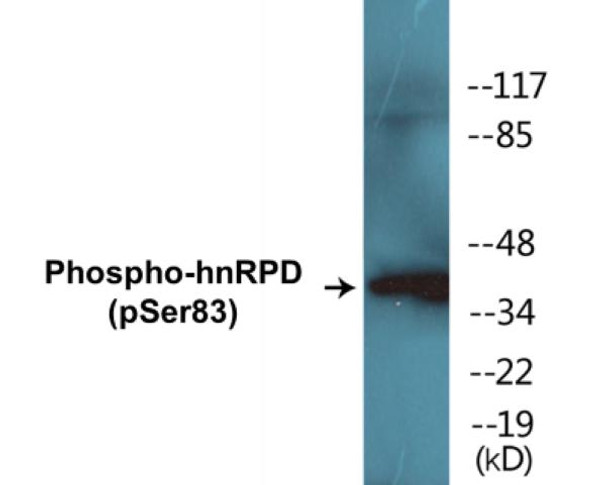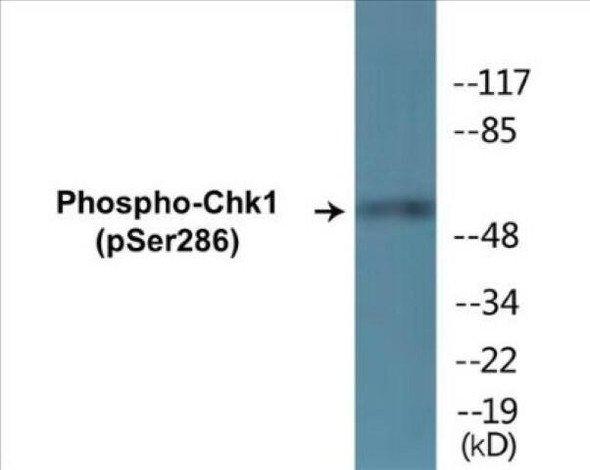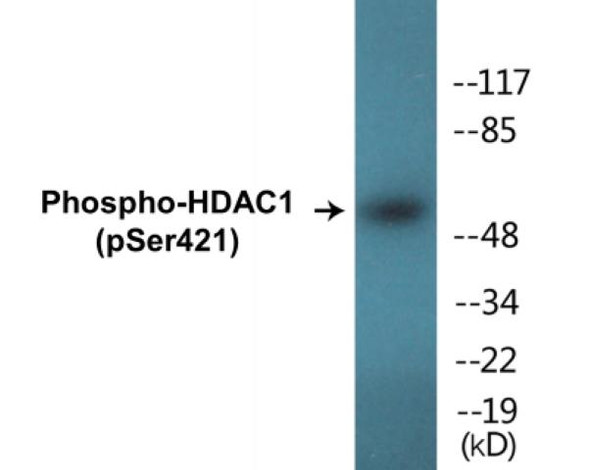hnRPD (Phospho-Ser83) Colorimetric Cell-Based ELISA Kit
- SKU:
- CBCAB01451
- Product Type:
- ELISA Kit
- ELISA Type:
- Cell Based Phospho Specific
- Research Area:
- Cell Biology
- Reactivity:
- Human
- Mouse
- Rat
- Detection Method:
- Colorimetric
Description
hnRPD (Phospho-Ser83)Colorimetric Cell-Based ELISA Kit
The HNRNPd (Phospho-Ser83) Colorimetric Cell-Based ELISA Kit is specifically designed for the accurate detection of HNRNPd protein phosphorylated at Ser83 in cell lysates. This kit offers high sensitivity and specificity, ensuring reliable and reproducible results for researchers studying the role of HNRNPd in cellular processes.HNRNPd, also known as heterogeneous nuclear ribonucleoprotein D, plays a critical role in RNA processing and gene expression regulation. Phosphorylation of HNRNPd at Ser83 has been linked to various diseases, including cancer and neurodegenerative disorders, making it a valuable biomarker for understanding disease mechanisms and potential therapeutic targets.
With easy-to-follow protocols and a user-friendly format, the HNRNPd (Phospho-Ser83) Colorimetric Cell-Based ELISA Kit is an essential tool for researchers looking to investigate the functional significance of HNRNPd phosphorylation in cellular signaling pathways.
| Product Name: | hnRPD (Phospho-Ser83) Colorimetric Cell-Based ELISA |
| Product Code: | CBCAB01451 |
| ELISA Type: | Cell-Based |
| Target: | hnRPD (Phospho-Ser83) |
| Reactivity: | Human, Mouse, Rat |
| Dynamic Range: | > 5000 Cells |
| Detection Method: | Colorimetric 450 nm |
| Format: | 2 x 96-Well Microplates |
The hnRPD (Phospho-Ser83) Colorimetric Cell-Based ELISA Kit is a convenient, lysate-free, high throughput and sensitive assay kit that can detect hnRPD protein phosphorylation and expression profile in cells. The kit can be used for measuring the relative amounts of phosphorylated hnRPD in cultured cells as well as screening for the effects that various treatments, inhibitors (ie. siRNA or chemicals), or activators have on hnRPD phosphorylation.
Qualitative determination of hnRPD (Phospho-Ser83) concentration is achieved by an indirect ELISA format. In essence, hnRPD (Phospho-Ser83) is captured by hnRPD (Phospho-Ser83)-specific primary (1ø) antibodies while the HRP-conjugated secondary (2ø) antibodies bind the Fc region of the 1ø antibody. Through this binding, the HRP enzyme conjugated to the 2ø antibody can catalyze a colorimetric reaction upon substrate addition. Due to the qualitative nature of the Cell-Based ELISA, multiple normalization methods are needed:
| 1. | A monoclonal antibody specific for human GAPDH is included to serve as an internal positive control in normalizing the target absorbance values. |
| 2. | Following the colorimetric measurement of HRP activity via substrate addition, the Crystal Violet whole-cell staining method may be used to determine cell density. After staining, the results can be analysed by normalizing the absorbance values to cell amounts, by which the plating difference can be adjusted. |
| Database Information: | Gene ID: 3184, UniProt ID: Q14103, OMIM: 601324, Unigene: Hs.480073 |
| Gene Symbol: | HNRNPD |
| Sub Type: | Phospho |
| UniProt Protein Function: | Binds with high affinity to RNA molecules that contain AU-rich elements (AREs) found within the 3'-UTR of many proto-oncogenes and cytokine mRNAs. Also binds to double- and single-stranded DNA sequences in a specific manner and functions a transcription factor. Each of the RNA-binding domains specifically can bind solely to a single-stranded non-monotonous 5'-UUAG-3' sequence and also weaker to the single-stranded 5'-TTAGGG-3' telomeric DNA repeat. Binds RNA oligonucleotides with 5'-UUAGGG-3' repeats more tightly than the telomeric single-stranded DNA 5'-TTAGGG-3' repeats. Binding of RRM1 to DNA inhibits the formation of DNA quadruplex structure which may play a role in telomere elongation. May be involved in translationally coupled mRNA turnover. Implicated with other RNA-binding proteins in the cytoplasmic deadenylation/translational and decay interplay of the FOS mRNA mediated by the major coding-region determinant of instability (mCRD) domain. May play a role in the regulation of the rhythmic expression of circadian clock core genes. Directly binds to the 3'UTR of CRY1 mRNA and induces CRY1 rhythmic translation. May also be involved in the regulation of PER2 translation. |
| NCBI Summary: | This gene belongs to the subfamily of ubiquitously expressed heterogeneous nuclear ribonucleoproteins (hnRNPs). The hnRNPs are nucleic acid binding proteins and they complex with heterogeneous nuclear RNA (hnRNA). These proteins are associated with pre-mRNAs in the nucleus and appear to influence pre-mRNA processing and other aspects of mRNA metabolism and transport. While all of the hnRNPs are present in the nucleus, some seem to shuttle between the nucleus and the cytoplasm. The hnRNP proteins have distinct nucleic acid binding properties. The protein encoded by this gene has two repeats of quasi-RRM domains that bind to RNAs. It localizes to both the nucleus and the cytoplasm. This protein is implicated in the regulation of mRNA stability. Alternative splicing of this gene results in four transcript variants. [provided by RefSeq, Jul 2008] |
| UniProt Code: | Q14103 |
| NCBI GenInfo Identifier: | 13124489 |
| NCBI Gene ID: | 3184 |
| NCBI Accession: | Q14103.1 |
| UniProt Secondary Accession: | Q14103,P07029, Q01858, Q14100, Q14101, Q14102, Q4W5A1 Q9UCE8, Q9UCE9, A8K9J2, |
| UniProt Related Accession: | Q14103 |
| Molecular Weight: | 30,672 Da |
| NCBI Full Name: | Heterogeneous nuclear ribonucleoprotein D0 |
| NCBI Synonym Full Names: | heterogeneous nuclear ribonucleoprotein D |
| NCBI Official Symbol: | HNRNPD |
| NCBI Official Synonym Symbols: | P37; AUF1; AUF1A; HNRPD; hnRNPD0 |
| NCBI Protein Information: | heterogeneous nuclear ribonucleoprotein D0 |
| UniProt Protein Name: | Heterogeneous nuclear ribonucleoprotein D0 |
| UniProt Synonym Protein Names: | AU-rich element RNA-binding protein 1 |
| Protein Family: | Heterogeneous nuclear ribonucleoprotein |
| UniProt Gene Name: | HNRNPD |
| UniProt Entry Name: | HNRPD_HUMAN |
| Component | Quantity |
| 96-Well Cell Culture Clear-Bottom Microplate | 2 plates |
| 10X TBS | 24 mL |
| Quenching Buffer | 24 mL |
| Blocking Buffer | 50 mL |
| 15X Wash Buffer | 50 mL |
| Primary Antibody Diluent | 12 mL |
| 100x Anti-Phospho Target Antibody | 60 µL |
| 100x Anti-Target Antibody | 60 µL |
| Anti-GAPDH Antibody | 60 µL |
| HRP-Conjugated Anti-Rabbit IgG Antibody | 12 mL |
| HRP-Conjugated Anti-Mouse IgG Antibody | 12 mL |
| SDS Solution | 12 mL |
| Stop Solution | 24 mL |
| Ready-to-Use Substrate | 12 mL |
| Crystal Violet Solution | 12 mL |
| Adhesive Plate Seals | 2 seals |
The following materials and/or equipment are NOT provided in this kit but are necessary to successfully conduct the experiment:
- Microplate reader able to measure absorbance at 450 nm and/or 595 nm for Crystal Violet Cell Staining (Optional)
- Micropipettes with capability of measuring volumes ranging from 1 µL to 1 ml
- 37% formaldehyde (Sigma Cat# F-8775) or formaldehyde from other sources
- Squirt bottle, manifold dispenser, multichannel pipette reservoir or automated microplate washer
- Graph paper or computer software capable of generating or displaying logarithmic functions
- Absorbent papers or vacuum aspirator
- Test tubes or microfuge tubes capable of storing ≥1 ml
- Poly-L-Lysine (Sigma Cat# P4832 for suspension cells)
- Orbital shaker (optional)
- Deionized or sterile water
*Note: Protocols are specific to each batch/lot. For the correct instructions please follow the protocol included in your kit.
| Step | Procedure |
| 1. | Seed 200 µL of 20,000 adherent cells in culture medium in each well of a 96-well plate. The plates included in the kit are sterile and treated for cell culture. For suspension cells and loosely attached cells, coat the plates with 100 µL of 10 µg/ml Poly-L-Lysine (not included) to each well of a 96-well plate for 30 minutes at 37 °C prior to adding cells. |
| 2. | Incubate the cells for overnight at 37 °C, 5% CO2. |
| 3. | Treat the cells as desired. |
| 4. | Remove the cell culture medium and rinse with 200 µL of 1x TBS, twice. |
| 5. | Fix the cells by incubating with 100 µL of Fixing Solution for 20 minutes at room temperature. The 4% formaldehyde is used for adherent cells and 8% formaldehyde is used for suspension cells and loosely attached cells. |
| 6. | Remove the Fixing Solution and wash the plate 3 times with 200 µL 1x Wash Buffer for five minutes each time with gentle shaking on the orbital shaker. The plate can be stored at 4 °C for a week. |
| 7. | Add 100 µL of Quenching Buffer and incubate for 20 minutes at room temperature. |
| 8. | Wash the plate 3 times with 1x Wash Buffer for 5 minutes each time. |
| 9. | Add 200 µL of Blocking Buffer and incubate for 1 hour at room temperature. |
| 10. | Wash 3 times with 200 µL of 1x Wash Buffer for 5 minutes each time. |
| 11. | Add 50 µL of 1x primary antibodies Anti-hnRPD (Phospho-Ser83) Antibody, Anti-hnRPD Antibody and/or Anti-GAPDH Antibody) to the corresponding wells, cover with Parafilm and incubate for 16 hours (overnight) at 4 °C. If the target expression is known to be high, incubate for 2 hours at room temperature. |
| 12. | Wash 3 times with 200 µL of 1x Wash Buffer for 5 minutes each time. |
| 13. | Add 50 µL of 1x secondary antibodies (HRP-Conjugated AntiRabbit IgG Antibody or HRP-Conjugated Anti-Mouse IgG Antibody) to corresponding wells and incubate for 1.5 hours at room temperature. |
| 14. | Wash 3 times with 200 µL of 1x Wash Buffer for 5 minutes each time. |
| 15. | Add 50 µL of Ready-to-Use Substrate to each well and incubate for 30 minutes at room temperature in the dark. |
| 16. | Add 50 µL of Stop Solution to each well and read OD at 450 nm immediately using the microplate reader. |
(Additional Crystal Violet staining may be performed if desired – details of this may be found in the kit technical manual.)










